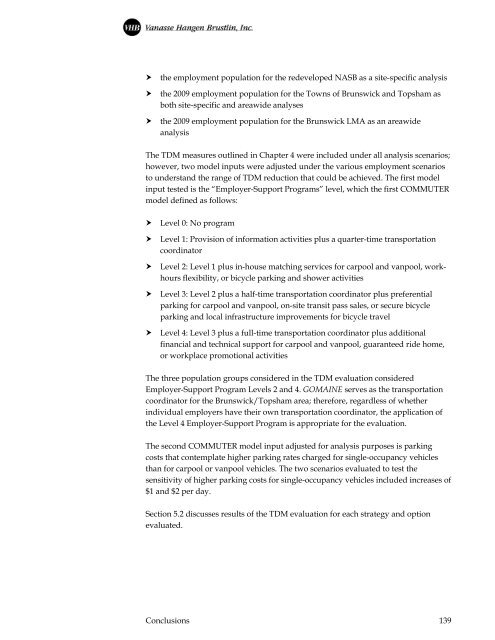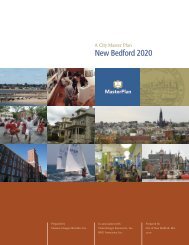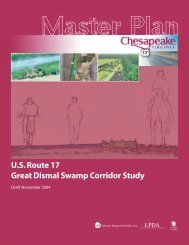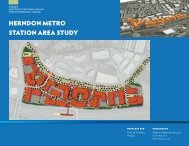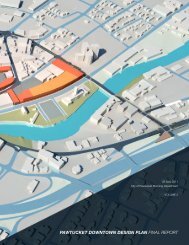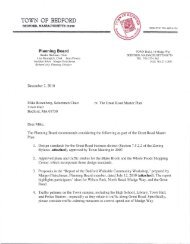Final Report - VHB.com
Final Report - VHB.com
Final Report - VHB.com
Create successful ePaper yourself
Turn your PDF publications into a flip-book with our unique Google optimized e-Paper software.
the employment population for the redeveloped NASB as a site-specific analysis<br />
the 2009 employment population for the Towns of Brunswick and Topsham as<br />
both site-specific and areawide analyses<br />
the 2009 employment population for the Brunswick LMA as an areawide<br />
analysis<br />
The TDM measures outlined in Chapter 4 were included under all analysis scenarios;<br />
however, two model inputs were adjusted under the various employment scenarios<br />
to understand the range of TDM reduction that could be achieved. The first model<br />
input tested is the “Employer-Support Programs” level, which the first COMMUTER<br />
model defined as follows:<br />
Level 0: No program<br />
Level 1: Provision of information activities plus a quarter-time transportation<br />
coordinator<br />
Level 2: Level 1 plus in-house matching services for carpool and vanpool, workhours<br />
flexibility, or bicycle parking and shower activities<br />
Level 3: Level 2 plus a half-time transportation coordinator plus preferential<br />
parking for carpool and vanpool, on-site transit pass sales, or secure bicycle<br />
parking and local infrastructure improvements for bicycle travel<br />
Level 4: Level 3 plus a full-time transportation coordinator plus additional<br />
financial and technical support for carpool and vanpool, guaranteed ride home,<br />
or workplace promotional activities<br />
The three population groups considered in the TDM evaluation considered<br />
Employer-Support Program Levels 2 and 4. GOMAINE serves as the transportation<br />
coordinator for the Brunswick/Topsham area; therefore, regardless of whether<br />
individual employers have their own transportation coordinator, the application of<br />
the Level 4 Employer-Support Program is appropriate for the evaluation.<br />
The second COMMUTER model input adjusted for analysis purposes is parking<br />
costs that contemplate higher parking rates charged for single-occupancy vehicles<br />
than for carpool or vanpool vehicles. The two scenarios evaluated to test the<br />
sensitivity of higher parking costs for single-occupancy vehicles included increases of<br />
$1 and $2 per day.<br />
Section 5.2 discusses results of the TDM evaluation for each strategy and option<br />
evaluated.<br />
Conclusions 139


